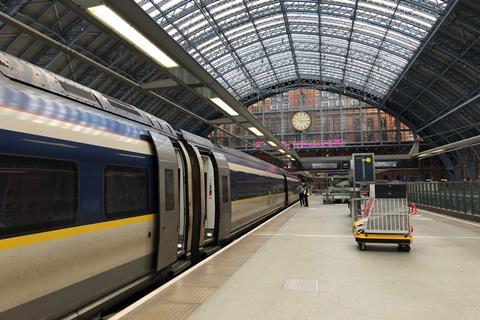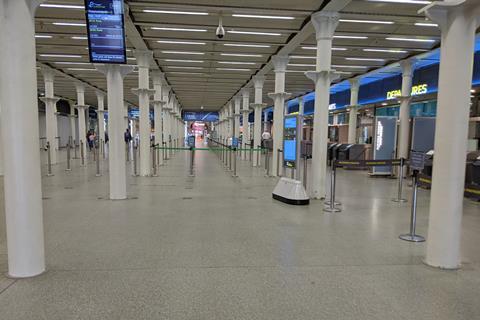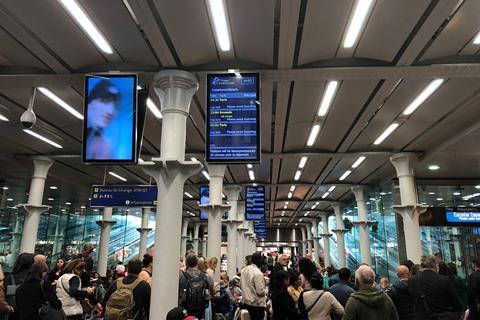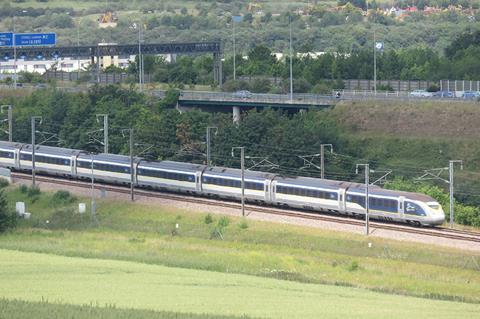
EUROPE: Problems faced by Eurostar as a result of the pandemic, Brexit and rising costs have been set out in detail in a letter from outgoing CEO Jacques Damas to the Chair of the UK’s House of Commons Transport Select Committee.
Chair Huw Merriman MP had written to Damas seeking information about Eurostar’s decision to suspend indefinitely calls at Ebbsfleet and Ashford International stations.
In his reply on September 26, Damas said current challenges mean Eurostar cannot pursue a strategy of volume and growth, but must focus on its core routes which make the maximum financial contribution per train.
Damas said there were two main factors affecting Eurostar in the short term.
Pandemic finances

Firstly, the pandemic led to a 95% drop in revenue for 15 months in 2020-21, and the Omicron wave in December 2021 and early 2022 had a further impact of at least £50m.
Unlike its airline competitors, ‘many of whom also have overseas and state-backed shareholdings’, Eurostar did not receive any state-backed loans.
Eurostar’s shareholders put a further £250m into the business, ‘almost double the total historic amount ever taken out in dividends’, but it needed an additional £500m in commercial debt which came at higher cost than the loans offered to airlines.
Damas said Eurostar’s focus is on reducing the debts incurred, and ’there is no prospect of any dividends to shareholders until this is done’.
Brexit border checks

Secondly, 40% of Eurostar customers are UK nationals, and the additional border checks when entering the Schengen area following Brexit have resulted in a significant increase in the processing times.
Eurostar has upgraded the French passport gates in London and more UK gates are going into Paris, and an extra French control booth is to be installed in London.
However, peak capacity through the stations is now 30% lower than pre-Brexit, and even with all booths staffed, London St Pancras can currently process a maximum of 1 500 passengers/h, compared to 2 200 in 2019.
Damas said this ‘has obvious commercial consequences and is not sustainable in the mid-to-long term’, and re-opening the intermediate stations where demand and yields are lower ’would take away from London vital border police resources’.
Future

Damas said the uncertainty regarding the EU’s Entry Exit System ‘hangs over us’, and ‘we cannot yet reasonably predict’ how the business and leisure markets will respond to structural changes including the energy crisis, working from home and pressures on the cost of living.’
Eurostar also faces nearly £100m in inflationary pressures, most acutely on the UK side where access to High Speed 1, ’which is already three to four times more expensive per km than its French equivalent, is now rising in price almost three times as fast’.
Eurostar and UK domestic operator Southeastern worked with HS1 Ltd to jointly propose a measure to alleviate pressure on charges in the near-term ‘using funds already in the system’. While the government did not object, ’process considerations tabled by the regulator have meant that this important initiative has run into the sand’, Damas wrote.
As a result, Eurostar and Southeastern are able to commit to fewer trains next year and into 2025 than they otherwise would have done.
Damas said this is of particular concern because of the Periodic Review that will fix charges for the five years from 2025, and ’Eurostar believes that unless a different position is taken in that review on the balance between near-term and long-term risks, and unless UK charges are reduced, then, at best, the business will find itself indefinitely locked into the present position of having to focus on driving high yield from a limited customer and service base’.
Merriman said the Transport Committee would write to the rail minister and rail regulator for ‘observations and interventions’ to support Eurostar as ‘a vital cog in our transport system’.

















